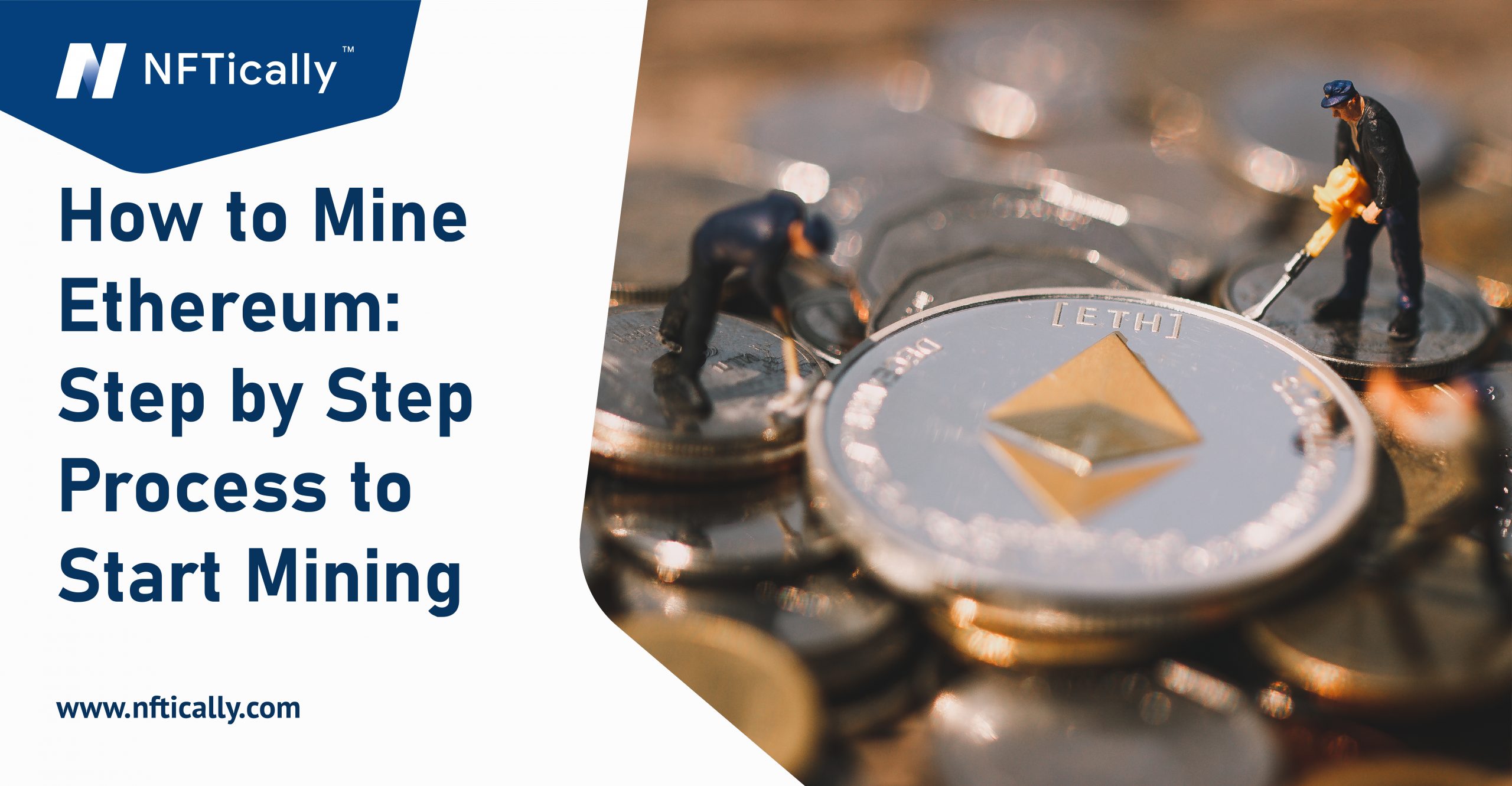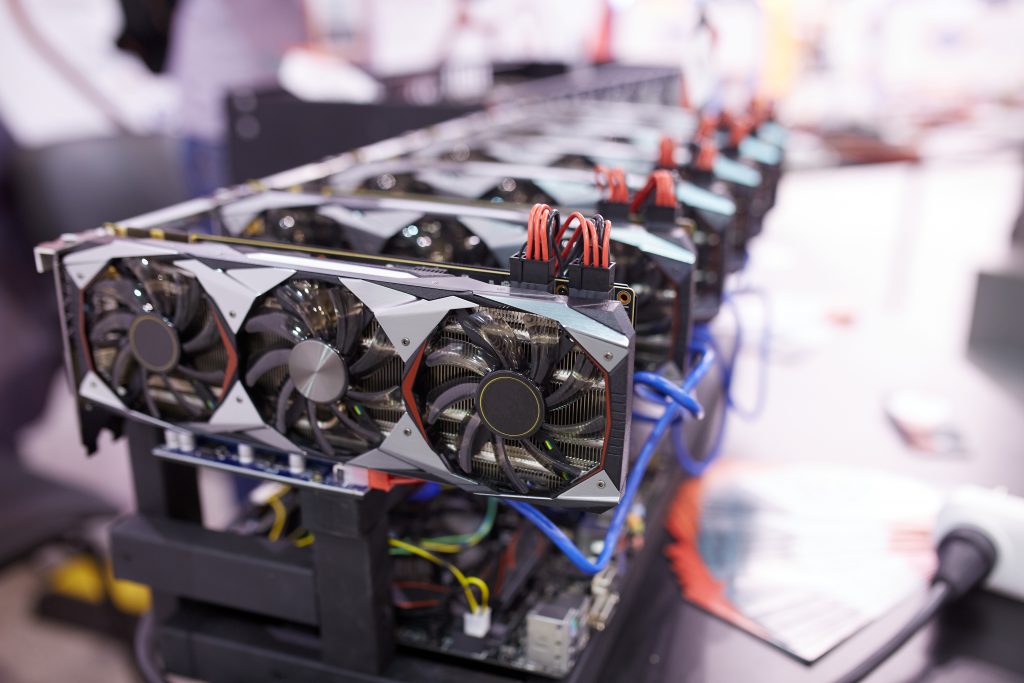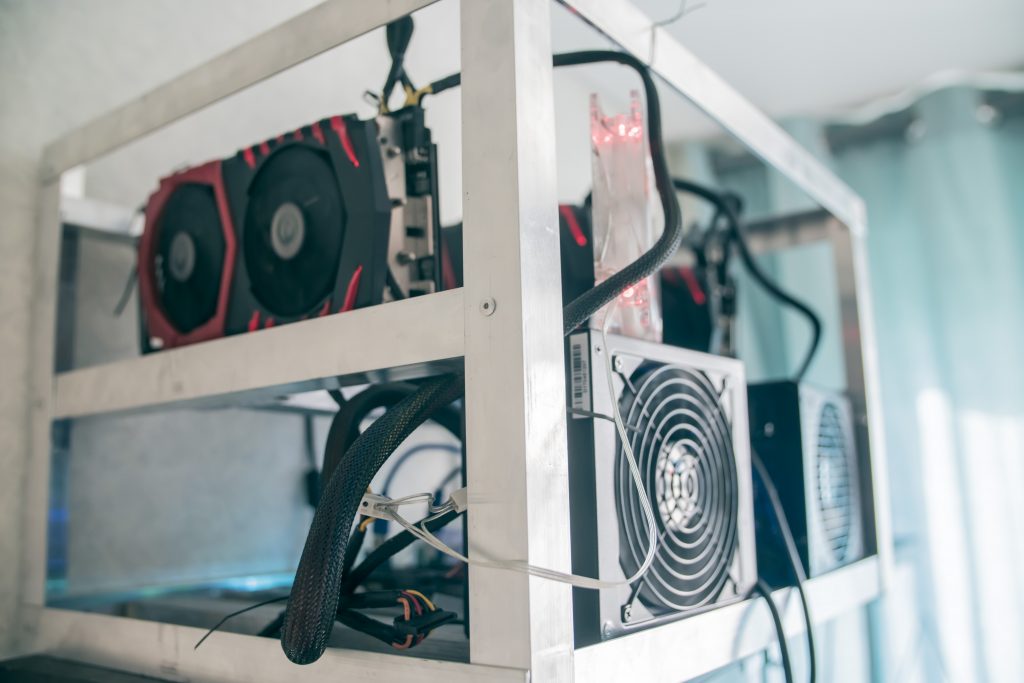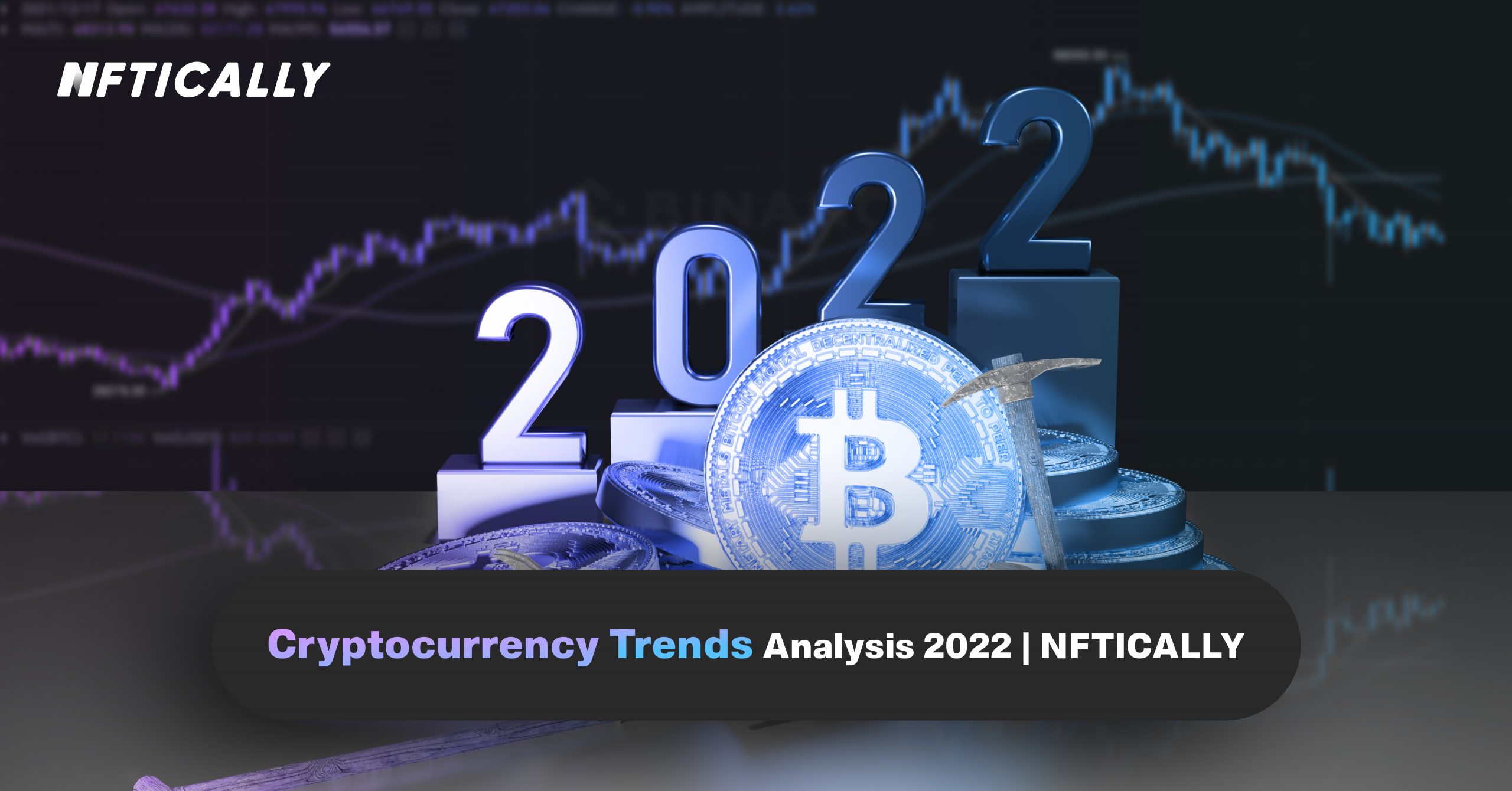- Bitcoin
- October 7, 2021
How to Mine Ethereum: Step by Step Process to Start Mining

After Bitcoin, Ethereum is the second most popular cryptocurrency. It’s the first currency to feature “smart contracts,” and boasts to have the second-largest market cap in the industry. Smart contracts are decentralized, automatic agreements that are inscribed into the blockchain. As per recent data, Ethereum miners earn an average of $77 million per day, while Bitcoin miners make $67 million. As a result, miners feel that mining Ethereum rather than Bitcoin is more profitable.
Are you looking for an easy step-by-step tutorial about how to mine Ethereum? Worry no more!! In this quick read, you will have all your questions about Ethereum mining answered.
What is Mining exactly?

Mining is the process of gathering cryptocurrency through high-powered computers that solve cryptographic equations. In this process, the miner gives computing space, energy, and time to filter through blocks. They transmit their solutions to the issuers after the mining process has reached the proper hash. Miners receive incentives in the form of transaction parts in exchange for participating in the mining process. This method is responsible for expanding the market circulation of a specific cryptocurrency. We hope now you have got the idea about what mining is.
What is Ethereum Mining?
The Ethereum mining process employs the Proof-of-Work (POW) mechanism. Miners solve complicated mathematical calculations to ensure that the transactions are genuine. When a miner solves this equation, he informs all the other miners “I’ve got it ! I’ve finally located the number we’ve been searching for”. Of course, this is done through an advanced computer language.
All the other miners check to see whether this figure is right. If 51 percent of them agree, a new block is added to the network. This new block contains all the confirmed transactions and the program/system awards the miner for his contribution! The miners then begin working on a fresh problem of validating another block of transactions.
Now that you know what Ethereum Mining is, you need to understand the different ways of Ethereum Mining. There are various ways to mine Ethereum, depending on the type of techniques and technologies employed. Let’s have a quick glance.
Pool mining (highly recommended)

The simplest and quickest method to get started with Ethereum mining is to join a pool. You collaborate with other individuals. Everyone in a single mining pool agrees that if anyone in the pool discovers the secret number, everyone will split the earnings. The pool size determines the rate at which you locate blocks and distribute prizes. However, The pool sizes differ from each other.
Solo mining (highly recommended)

You can also completely start off solo if you want (and it is the most popular form of mining as well!!). But the competition in solo mining, given the multiple numbers of solo miners coming out nowadays is massive. It is only profitable if you have decent resources to generate a good amount of hash speed. But, there are many disadvantages to solo mining. You will need a huge amount of GPUs, CPUs, and heat ventilation instruments. The overall mining system will also require a lot of electricity to run smoothly 24/7 year-round.
Cloud mining (moderately recommended)

Cloud mining is the best form of mining after pool mining. If explained simply, you will be collaborating with a mining agency or company to mine for you. Of course, you have to pay them up. In exchange, you will receive a small amount of Ether they mine in their farms as rewards. You don’t have to worry about electricity, noise, and ventilation. People who do not have the required resources to invest in mining rigs can always avail cloud mining services. The only disadvantage to this is that you need to pay the miners upfront and may incur losses if the Ethereum prices drop.
Other notable forms of mining are Application Specific Integrated Circuit (ASIC) Mining, CPU Mining, and Consulted Mining. Now that you have a good idea about the different forms of Mining, we will guide you through the most common mining process, i.e. Solo Mining.
What you will need
- Good graphics card with 4 or more GB
- A functional mining rig
- A crypto wallet ( Coinbase, Robinhood, Binance, etc.)
- Stable power (electricity) source.
Step-by-step solo Ethereum Mining Guide
Step 1: Download the mining client/software
Firstly, you have to download a mining client/software. MinerGate, NiceHash, CudoMiner select any client which you feel is good and easy for you. The features of these clients/software are more or less similar.
Step 2: Benchmark your PC
Before starting the mining process, it is generally recommended to run a PC mining benchmark test. You’ll get an estimate of how many hashes your GPU can generate. More hashes equal more profit! Most of the clients and software give the option to run a benchmark. Or else you can simply go online and search for “mining hash rate calculator” and proceed further.
Step 3: Start Mining !!
Now you are all set! Choose Ethereum from your provided list of cryptocurrencies and start mining. Make sure no other crypto has been selected. The client will now load a Dagger Hashimoto (DAG) file. This file will show algorithm functions that happen when ETH blocks are mined.
There should be a miner info tab present in your client that will show the amount of ETH you have mined. The data is continuously updated. You can also check for the hash rate your GPU is generating through the GPU mining tab or option within the client.
Step 4: Withdraw
For withdrawing the amount of ETH that you have mined, you have to connect the client/software with your digital wallet. Your ETH balance will be transferred to your crypto wallet. You can cash out your coins through your online bank ID (you need to connect it with your digital wallet first!).
Step 5: Profit Calculation
For accurate estimates, you can easily use Ethereum mining calculators such as cryptocompare.com and nicehash.com. Just enter the Mh/s (mega hashes per second), power consumption, and electricity cost in the relevant fields. The calculators will show you your profitability based on the value of ETH at present time.
That’s all!! You are all set to mine Ethereum coins.
You can start mining Ethereum coins all day now. But take note of the market price of Ethereum because crypto prices change frequently.
Keep following our blogs for more informational and fun reads. We at NFTically dream of educating curious minds regarding all the bits and buts of cryptocurrency, mining, and NFT. Team up with us, start your own NFT store, list your NFTs, and start earning!
Related Posts

Cryptocurrency Trends Analysis 2022 | NFTICALLY
The year 2021 has been a good one for cryptocurrency enthusiasts. After a 70 percent growth since January, Bitcoin’s value now stands at more than $2 trillion. There have also been significant accomplishments. In addition…
- June 10, 2022

The Critical Role That Bitcoin Can Play In Global Economy.
Bitcoin is a well-known cryptocurrency that operates across a network without the direct intervention of any authorized organization or financial institution, allowing for direct transfers from one party to another. It is sometimes referred to…
- March 10, 2022
Recent Posts
- Revolutionizing AI Clones: Sunny Leone Teams Up with Kamoto.AI for an Unprecedented Debut
- The Evolving Landscape of NFTs: A Glimpse into 2024
- NFT Trends to Shape 2024: A Deep Dive into the Future of Digital Assets
- The Gaming Revolution: NFTs Level Up the Player Experience
- NFTs and Intellectual Property Rights: Navigating Legal and Ethical Challenges
Recent Comments
Archives
- January 2024
- December 2023
- November 2023
- October 2023
- September 2023
- August 2023
- July 2023
- June 2023
- May 2023
- April 2023
- March 2023
- February 2023
- January 2023
- December 2022
- November 2022
- October 2022
- September 2022
- August 2022
- July 2022
- June 2022
- May 2022
- April 2022
- March 2022
- February 2022
- January 2022
- December 2021
- November 2021
- October 2021
- September 2021
- August 2021
- July 2021
Categories
- $ECOM
- 3D NFTs
- AI Characters
- Airdrpos
- Bitcoin
- Blockchain
- Blockchain Technology
- Buy NFTs
- Buying
- Crypto Collectibles
- Crypto Wallet
- Cryptocurrency
- Cryto Mining
- Digital Art
- Digital Assets
- Ethereum
- FAQs
- Features
- Generative Art Nfts
- ICO
- Invest in NFT
- Learn
- Metavatars
- Metaverse
- Minting
- NFT
- NFT 2.0
- NFT Art
- NFT Art Finance
- Nft auction
- NFT Communities
- NFT Crypto
- NFT crypto art
- NFT Drops
- NFT Games
- NFT gaming
- NFT Marketplace
- NFT Memes
- nft project
- NFT Royalties
- NFT Staking
- nft stocks
- NFT Store
- NFT Taxes
- NFT Trading Cards
- NFT Wallet
- NFTICALLY
- NFTs
- Non fungible tokens
- Non Fungile Tokens
- Ordinal NFTs
- Physical Assets
- Press Release
- Selling
- Solution
- Stablecoins
- Store
- Tensor Nfts
- Top Cryptocurrencies
- Uncategorized
- Web 2.0
- Web 3.0
- white label nft marketplace

